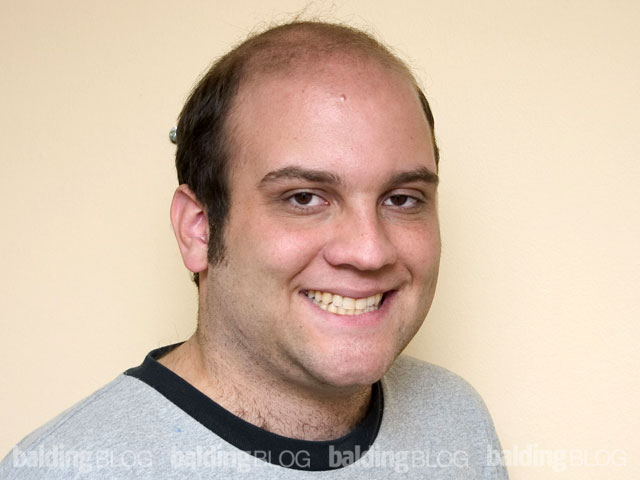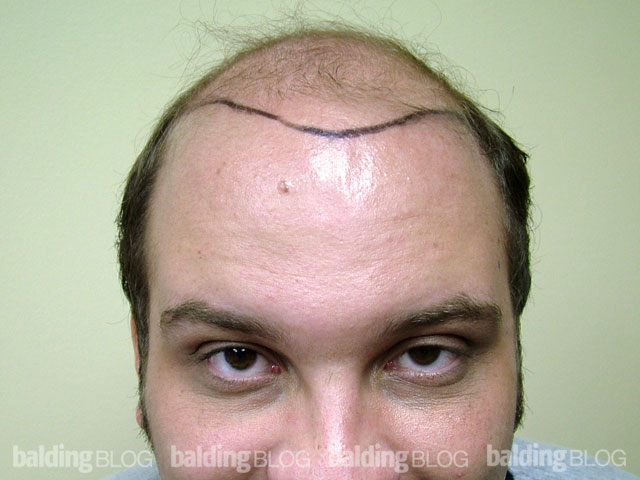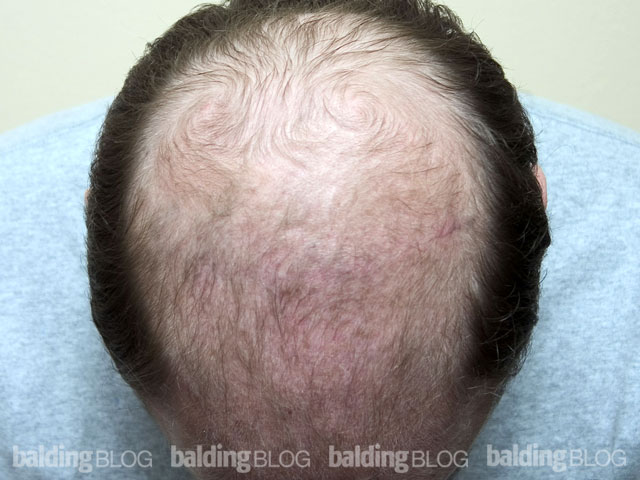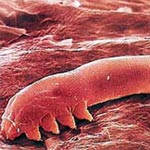Could an LLLT laser brush be used to treat skin damaged by the sun, liver spots or moles, as well?

I would doubt that it would give any benefit.
Could an LLLT laser brush be used to treat skin damaged by the sun, liver spots or moles, as well?

I would doubt that it would give any benefit.
I, as a first year medical student, am curious as to the reasons you went into hair reconstructive surgery. Too personal??
 As a surgical specialty, hair restoration has got to have the greatest patient satisfaction of any (at least in my opinion). It is supreme for helping people solve a problem that bothers them. Some people are quick to say that “it’s just hair” or look at hair transplants as strictly a vanity issue — and while those people are certainly entitled to their opinions, I would disagree with this notion. Hair loss can be a nightmare for many, and the injury to one’s confidence can be substantial. As I’ve said before, hair can be as important to men as the lion’s mane is to the lion. It is what creates his majestic look.
As a surgical specialty, hair restoration has got to have the greatest patient satisfaction of any (at least in my opinion). It is supreme for helping people solve a problem that bothers them. Some people are quick to say that “it’s just hair” or look at hair transplants as strictly a vanity issue — and while those people are certainly entitled to their opinions, I would disagree with this notion. Hair loss can be a nightmare for many, and the injury to one’s confidence can be substantial. As I’ve said before, hair can be as important to men as the lion’s mane is to the lion. It is what creates his majestic look.
I also recognized that there was a need for a better technology. I entered the business when plugs and scalp reductions were the ’standard of care’ and immediately determined that this was not an acceptable standard of care for my patients. So I analyzed what had to be done and on the very first day, the very first surgery, I created a new standard. My practice’s personal standard of care (large session surgeries of small follicular unit grafts) has now become the industry’s standard of care. So satisfaction came not only from patients I directly treated, but also from thousands of other patients who I know benefited from what was then a revolutionary change in the art of hair transplant surgery. I take great personal satisfaction in knowing that I have made a difference and this industry has been good to me. It was uniquely backward and unrefined when I entered the field and I contributed to its modern day evolution. You can see my professional history on my CV for a full look at what I’ve done. I apologize in advance if this answer seems like a big pat on the back to myself, but hey, you asked. There’s no magic or myth about it — nothing too personal to share.
![]()
![]()
Paid advertisements (not an endorsement):
Re: Donald Trump’s hair
I always believed that his deep forehead hairline may have been due to the fact that he got a hair transplant in the early days of same; they seem to know better nowadays that transplanting hair should be done along more natural hair lines. Is this a possible explanation as to why his hair line starts so far down his forehead?

I have never seen his hairline, because he always combs his hair forward and over to cover his hairline. I do believe that he had the old type of transplant and scalp reduction procedure, leaving him with enough of a deformity that he needs to cover his hair with his unique style of combover. I would love to see him and give him an opinion as to what I could do to fix it. I would, of course, respect his privacy and keep his medical care completely confidential, just as I would with the truck drivers who came to see me.
Image: Wikipedia
For the past six or seven years, I’ve been getting folliculitis on the back of my scalp only during the winter. My new dermatologist claims that I have ‘sterile folliculitis.” Apparently, when I get haircuts, the hairs regrow skew and my immune system attacks them as if they were foreign. I have two questions 1) why does this only happen in the winter and 2) why is there a time lag between the emergence of the hair from my skin and the onset of inflammation (my hair is already 1-2 inches long when pus starts to form around the follicle…I would expect the pus to form just as it was emerging, not a couple of inches later). Thanks for your help.
P.S. I’m a medical student and would love technical details about the inflammatory response against my hair because I find the whole thing sort of mystifying, assuming the diagnosis is correct.

A good friend of mine has the same problem that you mentioned whenever he gets a haircut, and I have a similar problem around the winter months (when I am in colder weather).
As a medical student you should know that this is the “practice” of medicine… and not the “science” of medicine. There is no solid scientific explanation, but doctors are keen to ‘describe’ what they see and give it fancy names (sterile folliculitis sounds good, and I am supposed to be an expert in the field).
My personal theory is that in the winter months, your skin is more dry; dry skin promotes irritation to the skin. I suspect your neck/back of scalp is more sensitive to dry skin.
With respect to haircuts and folliculitis, I suspect that the short haircuts irritate your skin (the same way dry air/weather does).
You must remember it is not all about the diagnosis, but what you do with it and how you treat it. We can all try to be intellectual and talk about the immune system and the mediators such as IL2, IL4, TGF, B cells, T cells, etc, etc (immunology), but in the end it seems cold weather and short haircuts just don’t agree with you. Avoid short haircuts and try moisturizing cream.
what is a flowbee? Does it help keep the hair healthy?

 According to Wikipedia:
According to Wikipedia:
The Flowbee is a vacuum-powered device made for cutting hair invented by San Diego carpenter Rick Hunt in the late 1980s. The product was touted as being capable of performing “hundreds of precision layered haircuts” and was frequently displayed on late-night television infomercials.
It does nothing for hair health — it is simply a way of cutting your hair evenly at home. Their official site is at Flowbee.com.
I’m getting a little tired of doctors saying there are no studies that demonstrate the effectiveness of LLLT on hair regrowth. They need simply do a medline search. A recent study of alopecia areata using intra-subject controls found regrowth on over 90% of the treatment bald spots and 0% regrowth on the control spots. Granted, they don’t understand why and the positive results come from studies using 308nm xenon-chloride excimer lasers to 904nm pulsed diode lasers. The doctors thaat don’t understand the significance of these results simply don’t understand experimental design.
Remember the birth defects from thalidimide that doctors endorsed and prescribed? Recall 20 years ago doctors said megadoses of vitamin C did nothing. Sometimes doctors are wrong and sometimes they are right, but opinions from individuals who have not read the research are of no value.

As I’ve said, the medical field is often referred to as the “practice” of medicine and not “science” of medicine. Thus, sometimes doctors do not know why certain treatments work and sometimes they are wrong in prescribing a treatment.
With respect to lasers, you can approach it from either a scientific perspective or a capitalistic perspective. From a scientific perspective, you mention a very important bullet point: the “experimental design”. Look behind the research method and the sponsors of said research and you may find conflicting sources of interest. With respect to the capitalistic perspective, it boils down to making money. It sounds harmless and it may be worth a try to many individuals, especially with these research papers, but you also forget how many research papers have gone scrutinized (as your thalidomide example). Research papers endorsed medications such as Celebrex (COX2 inhibitors), but in recent years controversy arose from risks associated with heart attacks.
You are correct in stating that sometimes doctors are wrong, but sometimes research papers are wrong. You can see this as a stalemate. You can see it as buyer beware. We all have choices and opinions.
 I received quite a few emails today from readers of Balding Blog that saw me on the new Great American Dream Vote television show last night on ABC. Thanks for writing in to let me know you saw the program. I was only on there for a few moments as part of the prize package for the dream winner named Russ, but it was a fun experience. Russ is a very nice 22 year old college student with significant hair loss — Norwood Class 6/7 balding pattern (Class 7 is the worst with only a 3 inch rim of normal hair around the side and back of the head and Russ is already close to that pattern).
I received quite a few emails today from readers of Balding Blog that saw me on the new Great American Dream Vote television show last night on ABC. Thanks for writing in to let me know you saw the program. I was only on there for a few moments as part of the prize package for the dream winner named Russ, but it was a fun experience. Russ is a very nice 22 year old college student with significant hair loss — Norwood Class 6/7 balding pattern (Class 7 is the worst with only a 3 inch rim of normal hair around the side and back of the head and Russ is already close to that pattern).
The basic idea of the show is that a number of everyday folks are selected to go up on stage to tell the audience what their dream is (from opening a flower shop to opening a dog rescue shelter to having a full head of hair) — and eventually the contestants are narrowed down to only 2. Those 2 contestants are then voted for by the home audience by a toll-free phone number, and the person with the highest amounts of votes gets their wish. Young Russ was chosen! He will receive hair transplant surgery at the New Hair Institute, as well as a bevy of other prizes (of which I have nothing to do with)! He’s been quite overwhelmed by all the attention he’s received and has headed back home to get back to his schooling. He’ll be back out to my Los Angeles office very soon to have his procedure performed, and I’ll be sure to post photos of his results as the updates are sent to my office. In the meantime, here are some photos I took at his consultation that really show off how much work he needs. Click the photos to enlarge.



I recently read about Demodex folliculorum. From what I understand it is a parasite that lives in the hair follicles and feeds off the sebaceous glands. I have also read reports stating that this infestation may cause diffuse hair thinning.
Is this true? How common is this condition, and how is it treated?

 Demodex folliculorum is a tiny mite, less than 0.4 mm long, that lives in pores and hair follicles. It is usually seen on the nose, forehead, cheek, and chin, and often in the roots of your eyelashes. Demodicids look like worms. People with oily skin, or those who use cosmetics heavily and don’t wash thoroughly have the heaviest infestations, but it is not uncommon for adults to carry a few demodicids.
Demodex folliculorum is a tiny mite, less than 0.4 mm long, that lives in pores and hair follicles. It is usually seen on the nose, forehead, cheek, and chin, and often in the roots of your eyelashes. Demodicids look like worms. People with oily skin, or those who use cosmetics heavily and don’t wash thoroughly have the heaviest infestations, but it is not uncommon for adults to carry a few demodicids.
Follicular inflammation produces edema and results in easier epilation of the eyelashes. Loss of lashes may happen when there are abundant mites located near one hair follicle. Demodex are harmless and don’t transmit diseases, but large numbers of demodex mites may cause itching and skin disorders, referred to as Demodicosis.
Diagnosis is through a high index of clinical suspicion. This condition usually doesn’t cause any symptoms. If symptomatic, patients may experience itching and local (not diffuse) hair loss. Treatment for the symptomatic cases include cleansing the area and even antibiotics for severe cases.
Image: jashbotanicals.com
Inversion Therapy: What is your view of this i.e hanging upside down for a few minutes each day to increase blood flow to the scalp. Any benefits to slowing hairloss or re-growth ?
Thanks

The theory of baldness being due to lack of blood is outdated now. In fact there is no evidence to prove the scalp blood supply in balding people is less than in non-balding people, but when the balding happens, the blood supply goes down as a response to the hair being lost. Hair has a very high metabolic rate, so when it dies off from genetic balding, there is no real need for the blood supply that once bathed the hair follicles.
One of my patients actually had this type of therapy for 6 months, haning from his feel for a few hours each day. Guess what? No news is not good news! It did not work!
Got recently linked to your site, looks like lots of good reading for the next couple of weeks for me.
I just wanted to say that I am 39 and am a five year user of Propecia. My main point is that I have added Rogaine Foam, MSM and Niz shampoo since Xmas 2006 and have seen great results first behind my hairline, a bit in the crown, and now a bit at the temples. My crown is to the point where I can style my hair and hide the diffuse thinning. I’m hopeful in 4-6 months to have filled in the crown even more. I’m surprised to see hair regrowing at my temples. Only spot not showing much improvement in the exact middle of my hair line.

If you are getting good response from Propecia and the routine you are using, stay on that track. Temple regrowth (temple prominences) is unusual, but I have seen corner and frontal hairline regrowth in a few people.
Also, I realize you included a link to a site full of photos, but to protect your privacy I removed the link before posting this. If you’d like to make this link available to the public, you can either post it as a comment here or send me a note and I’ll update the post. Thanks for sharing.